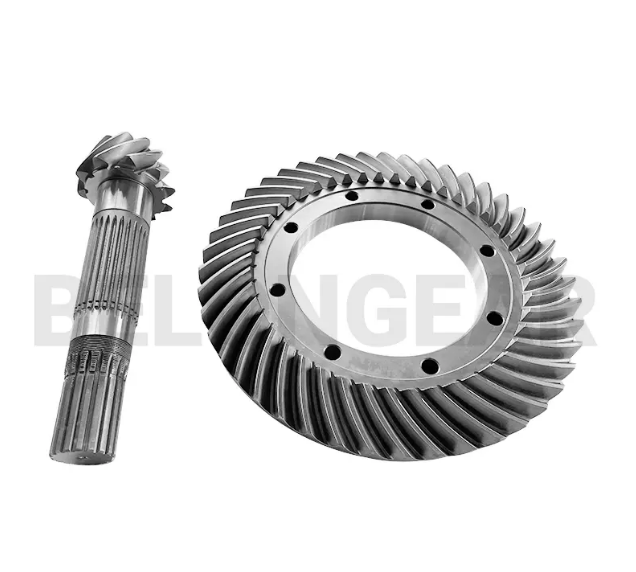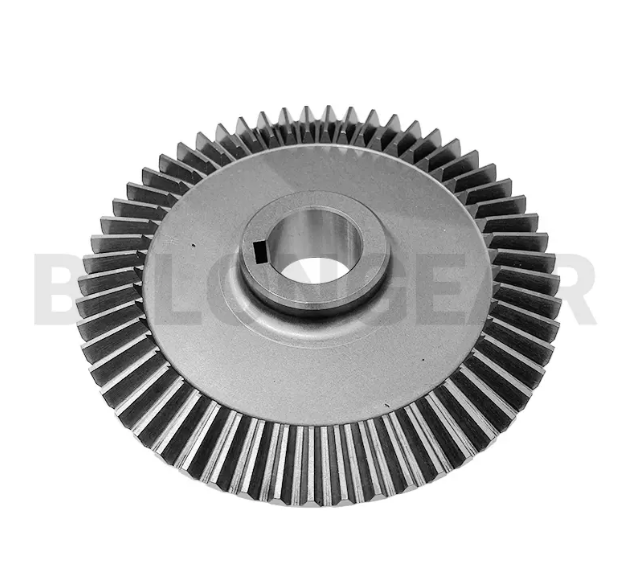Difference between Spiral Bevel Gears And Straight Bevel Gears
Bevel gears are indispensable in industry due to their unique ability to transmit motion and power between two intersecting shafts. And they have a wide range of applications. The tooth shape of bevel gear can be divided into straight tooth and helical tooth shape, so what is the difference between them.
Spiral Bevel Gear
Spiral bevel gears are beveled gears with helical teeth formed on the gear face along a winding line. The main advantage of helical gears over spur gears is smooth operation because the teeth mesh gradually. When each pair of gears is in contact, force transmission is smoother. Spiral bevel gears should be replaced in pairs and run together concerning the main helical gear. Spiral bevel gears are more commonly used in vehicle differentials, automotive, and aerospace. The spiral design produces less vibration and noise than straight bevel gears.
Straight Bevel Gear
Straight bevel gear is where the axes of the two-member shafts intersect, and the tooth flanks are conical in shape. However, straight bevel gear sets are usually mounted at 90°; other angles are also used. The pitch faces of bevel gears are conical. Two essential properties of a gear are tooth flank and pitch angle.
Bevel gears typically have a pitch angle between 0° and 90°. The more common bevel gears have a conical shape and a pitch angle of 90° or less. This type of bevel gear is called an external bevel gear because the teeth face outward. The pitch faces of the meshing external bevel gears are coaxial with the gear shaft. The vertices of the two surfaces are always at the intersection of the axes. A bevel gear with a pitch angle greater than 90° is called an internal bevel gear; the tooth top of the gear faces inward. A bevel gear with a pitch angle of precisely 90° has teeth parallel to the axis.
Difference between Them
Noise/Vibration
Straight bevel gear has straight teeth like a spur gear that are cut along the axis on a cone. For this reason, it can be quite noisy as the teeth of the mating gears collide upon making contact.
Spiral bevel gear has spiral teeth that are cut in a spiral curve across the pitch cone. Unlike its straight counterpart, the teeth of two mating spiral bevel gears come in contact more gradually and do not collide. This results in less vibration, and quieter, smoother operations.
Loading
Due to the sudden contact of the teeth with straight bevel gears, it is subject to impact or shock loading. Inversely, the gradual engagement of the teeth with spiral bevel gears results in a more gradual buildup of the load.
Axial Thrust
Because of their cone shape, bevel gears produce axial thrust force — a type of force that acts parallel to the axis of rotation. A spiral bevel gear exerts more thrust force on bearings thanks to its ability to change the direction of thrust with the hand of the spiral and its rotation directions.
Manufacturing Cost
Generally, the conventional method of manufacturing a spiral bevel gear has higher costs compared to that of a straight bevel gear. For one thing, a straight bevel gear has a much easier design that is quicker to execute than that of its spiral counterpart.
Post time: Jul-25-2023






